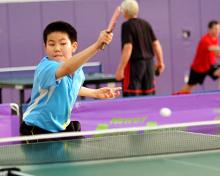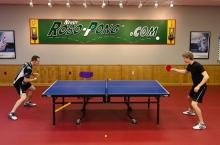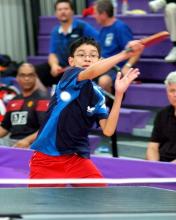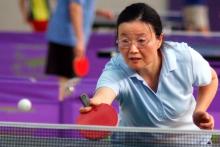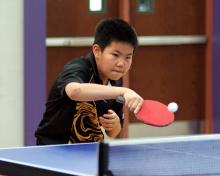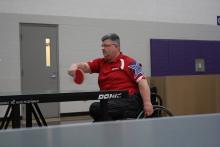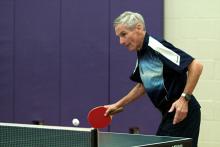An article related to improving players table tennis skills.
by Samson Dubina on Tue, 2013-12-10 15:36
Learn from watching this short video clip!
In table tennis, footwork is important for all levels. Using the Newgy Robo-Pong 2050 is one of the best ways to improve footwork. Most players try to improve their side-to-side footwork, which is important. However, only a few players try to improve their in-and-out footwork.
In-and-out footwork is vitally important for the slow block, especially when you are away from the table. Watch how Joo Se Hyuk demonstrates the stepping in on this video:
by Samson Dubina on Fri, 2013-12-06 20:12
Find out which strokes are the most IMPORTANT
I have received hundreds of table tennis e-mails with questions regarding table tennis. One of the most common questions is…
“Which skills should I be working on?”
That’s a good question. My answer will vary because of…
1. The age of the player
2. The game-style of the player
3. The mental game of the player
4. The physical condition of the player
With that said, I’ll attempt to list some general items that should be learned at each level.
Novice
A. Rules of the game
B. Basic footwork (side-to-side)
by Samson Dubina on Fri, 2013-12-06 20:07
Steps to learning this modern skill!
Most table tennis players label topspin shots into several categories such as: loop, block or smash. However, modern attacking players have developed an offensive block called an active block. Active blocking is a combination between a block, loop and counter loop. It is best used off-the-bounce against a slow to medium speed loop.
Watch in this http://www.youtube.com/watch?v=kwbcgOPxx8w&feature=fvsr as Kenta effectively uses active blocking to stop his opponents’ attack and take control of the table.
by Samson Dubina on Mon, 2013-12-02 10:41
When do I contact the ball early? Top-of-the-bounce? Fall?
In table tennis, you can contact the ball on the rise, on the top of the bounce, or on the fall. Sometimes beginners have difficulty controlling the spin, depth, and power because they don’t know when to hit the ball.
by Samson Dubina on Sun, 2013-12-01 08:06
When you serve, return serve, or hit any shot throughout a table tennis match, your opponent will have a variety of choices on how to return the ball. You need to prepare yourself for the worst-case-scenario then adjust if he does something easier.
by Samson Dubina on Thu, 2013-11-28 19:32
A Good Question To Ask...
Next time that you are discussing ping pong with a recreational player, ask him the following question, “If the table tennis table is five feet wide, why is the Olympic-size court thirty-five feet wide?” …he probably won’t have an answer.
Most recreational player hit the corners, but can’t hit the ball any wider. By using spin and contacting the side of the ball on a push or loop, you can easily develop a wide shot. If you add some sidespin to your shot, you can make it go even wider.
by Samson Dubina on Wed, 2013-11-27 16:54
Tournament Article From Our Last Event Here in Akron
Newgy September Giant Round Robin
Eighty-one players from 7 different states competed in the Newgy September Giant Round Robin played on 12 tables with excellent conditions, free meals, and over $2000 in cash and prizes.
by Samson Dubina on Mon, 2013-11-25 21:47
Find Out the 4 Secrets About When to Call It
Picture this: You are playing the most important table tennis match of your life in the final round, crowds have gathered, big money is at stake, you are preparing to serve, the score is 9-9… should you call timeout?
The question above could be answered “YES” or “NO” depending on the circumstance. In the above situation, you should possibly call timeout if:
1. You need to consult your coach. If you are unsure on what to serve or what strategy to use, ask your coach.
by Samson Dubina on Mon, 2013-11-25 21:38
Failure vs. Success For the Offensive Player
You have practiced your attack for months…
Hired a physical trainer…
Perfected your favorite table tennis robot drills…
Purchased the newest equipment…
Watched every table tennis video on the market…
Held tight to your diet…
Prepared mentally for your first tournament…
BUT failed to win a single match! What went wrong? As an offensive player, your experienced opponents were probably able to attack first.
by Samson Dubina on Fri, 2013-11-22 20:59
Pages





